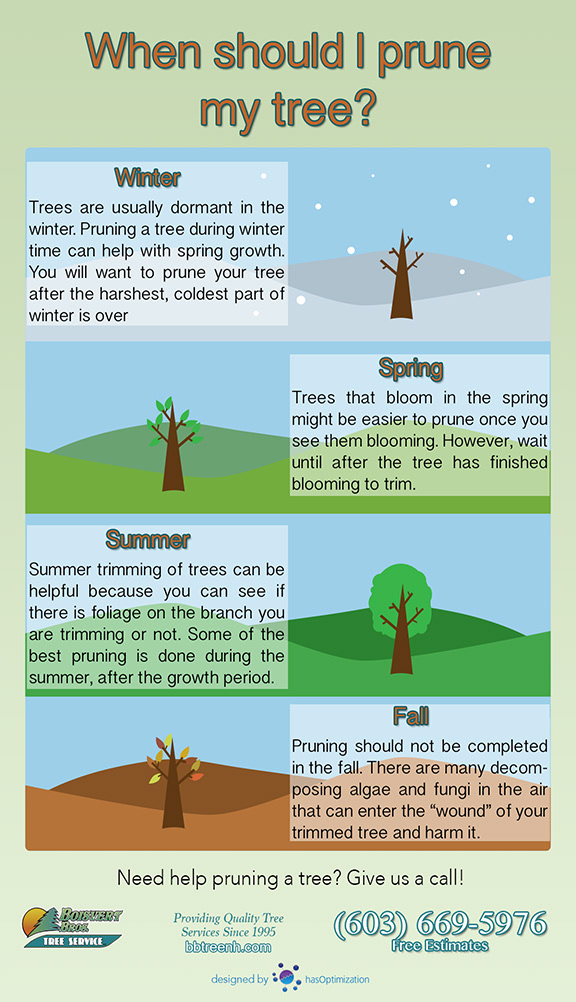Tree Treatment Throughout The Seasons: Best Practices For Taking Care Of Trees Prior To And Adhering To Removal
Tree Treatment Throughout The Seasons: Best Practices For Taking Care Of Trees Prior To And Adhering To Removal
Blog Article
Article Created By-
When it pertains to seasonal tree treatment, making sure correct management prior to and after removal can significantly influence the health and aesthetics of your landscape. By understanding just click the following web site needed steps associated with evaluating tree wellness and getting ready for removal, you can proactively protect your property. But what about the vital techniques to follow once the tree is gone? Keep tuned to discover the necessary post-removal treatment procedures that will certainly help you grow a successful and sustainable environment for your trees.
Pre-Removal Tree Treatment
Prior to attending to the removal of a tree, it's essential to focus on pre-removal tree treatment. Start by analyzing the tree's health and architectural honesty. Seek indicators of disease, pest invasions, or any kind of architectural issues that might present a safety and security danger throughout removal. It's essential to seek advice from a qualified arborist to identify the best course of action.
Pruning dead or diseased branches can prevent more damages to the tree and make sure a smoother elimination procedure.
In addition, take into consideration the environmental effect of getting rid of the tree. Trees play an important duty in our ecological community, so growing a new tree in a suitable place can help counter any type of loss. Guarantee that you have the necessary permits and approvals for tree elimination, especially if the tree is safeguarded by local policies.
Seasonal Upkeep Tips
Evaluating your tree's requirements throughout the year is imperative for its health and wellness and durability. To maintain your trees in top problem, comply with these seasonal upkeep suggestions.
In arborist certification , focus on pruning to remove dead or damaged branches and motivate new development.
Summer season asks for regular watering, specifically throughout dry spells, to ensure your tree stays hydrated.
As fall approaches, watch out for very early indications of disease or tension, and consider using compost to shield the origins throughout winter.
In wintertime, be cautious when eliminating snow from branches to stop breakage, and remain to check your tree's overall health and wellness.
Keep in mind to adjust your care routine based upon the certain needs of your tree varieties and neighborhood climate. By staying mindful and aggressive throughout the seasons, you can aid your trees grow and prosper for years to find.
Post-Removal Tree Care
To make sure the health of your landscape even after tree removal, proper post-removal treatment is vital. After a tree is removed, it's critical to load the staying hole with topsoil and portable it to stop settling. This will certainly help keep the stability of the ground and avoid prospective risks in the future.
Think about planting new plants instead of the gotten rid of tree to bring back the balance and aesthetics of your landscape. On a regular basis water the location to promote the development of new plants and avoid soil disintegration.
Inspect the surrounding trees for any kind of signs of disease or tension that might have been triggered by the gotten rid of tree. Keep an eye out for parasites that may've been attracted to the previous tree and take preventive measures to shield the staying vegetation.
If required, consult with a professional arborist to analyze the impact of the elimination on the bordering trees and figure out any extra care required. By complying with these post-removal care steps, you can make sure the continued health and appeal of your landscape.
Final thought
To conclude, aggressive seasonal tree care is important for keeping the health and equilibrium of your landscape. By evaluating tree wellness, pruning, and speaking with an arborist prior to removal, you can make sure a safe process. After removal, loading the hole, planting new plants, and regular watering will advertise new growth and avoid erosion. Bear in mind to check surrounding trees for condition and seek more treatment steps from an arborist to maintain your landscape growing.
